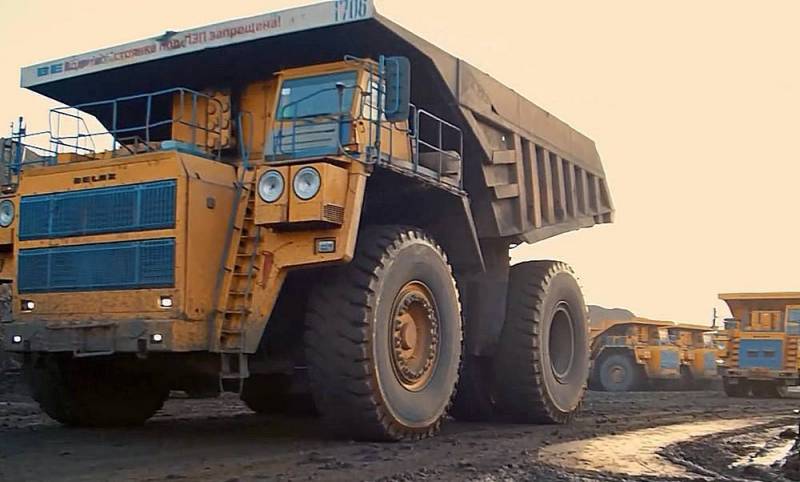Does Russia need coal from the liberated Donbass?
After the LPR and the DPR became part of the Russian Federation, the question of the fate of the local mining industry becomes relevant in the light of their full integration. Donbass under Ukraine was in decline, but in fairness it should be noted that it would have degraded without it. Political events, economic The processes and statistics of recent decades show that the further development of the coal industry in the region has become impossible, and the era of miners as a labor guard has passed.
Economic feasibility due to market conditions
You don't have to look far for arguments. The volume of coal consumption is falling on a global scale: for some time now, the world community no longer needs such an amount of black gold as, say, a quarter of a century ago. Export is slow. And inside Russia, with its surplus of cheaper Siberian coal, there is hardly a place for a Donetsk-Luhansk competitor.
So, it seems that the former all-Union stoker will have to extract coal mainly for its own needs. Unless, of course, its infrastructure is reoriented to the production of technologically advanced commercial products instead of classic high-ash solid fuels (for example, coal concentrate, synthetic liquid fuel or thermoantacite). But it will be a qualitatively different situation. We have to admit: Donbass successfully completed an important mission for its time, which is neither good nor bad, this is a given. No, its capabilities have not been exhausted, it's just that they are no longer needed in their previous form, because priorities have changed. In addition, there are additional problems specific to this basin.
Difficult mining and geological conditions
The bowels of the Luhansk region and especially the Donetsk region contain mainly thin layers, on average 1-1,2 m. excavation sometimes exceeds 77 km, where the temperature of host rocks reaches 40 ℃. The Central Donbass is characterized by steeply dipping seams, which negatively affects the productivity of mining. More or less attractive coal facilities serve the relatively young deposits of Dobropolye and Pavlograd (Western Donbass), although they are located on Ukrainian territory.
Costly production is reflected in the cost of the final product, which is one of the highest in the world. The reality is that foreign partners are not ready to pay 200-250 euros/t even for super-calorific Donbass anthracite. Ceteris paribus, it is easier for them to buy a South African "slim", for example, for 150 euros / ton. This is about energy brands. At the same time, I dare to assume that coking coal will still be in demand, but its share in the total production of Donbass is traditionally 3-3,5 times less than energy.
Lack of labor reserves
In the old days, it was not so easy to get a job in the leading underground specialties, especially at a prosperous mine. Starting from 2014, sales and, consequently, production fell, and the outflow of personnel began. Therefore, now the picture is different: there is an acute shortage of labor force, the number of vacancies goes into the thousands. Part of the miners went in search of a better life in Kuzbass and Yakutia, the rest are fighting. If things go like this, soon there will be no one to extract and process coal.
Non-ecological raw materials and production
Coal is reputed to be the dirtiest energy source. The current trend is such that in order to comply with the Kyoto Protocol, even less toxic hydrocarbon fuels from oil and natural gas, the world civilization prefers to refuse whenever possible. With some reservations, nuclear energy is optimal plus an alternative based on renewable resources. This is ideal, but you will have to strive for it willy-nilly. For the thoughtless policy of pumping out the natural resources of Donbass at any cost is barbarism with a long history, which it is time for the new government to put an end to.
What causes anxiety
Under Ukraine, the predominant part of the industry was on state subsidies, largely thanks to which mining and processing enterprises existed. Conditionally unprofitable production was required by the national industry as a supplier of raw materials, since there was no alternative to the coal monopoly in Nezalezhnaya.
In Russia, the picture is different. With the transition to market relations, the country's leadership, having gradually restructured the industry, eventually completely handed over the mines to private capital (except for Arktikugol). This seemed logical, since in comparison with the self-sufficient oil and gas sector, they looked like outright ballast. Life has shown that denationalization, partial closure of enterprises and curtailment of the mine fund became a step justified from an economic point of view: the domestic economy not only did not suffer, but even recovered to a certain extent. But the social situation in the former mining regions, for obvious reasons, worsened ...
There is no centralized supervision and guardianship of the industry on the part of the state, as in Ukraine, in Russia at the federal level. The Ministry of Energy has a department of the coal industry, but what its specific goals, tasks and functions are is unclear. On the official website of the ministry, the corresponding page is formally available, but there is no relevant information there. By the way, the director of the department, Pyotr Bobylev, has neither work experience in the coal industry, nor specialized mining education.
The road by walking
Given the complex of subjective and objective factors mentioned above, the Russian government faces a difficult task. After the audit and inventory of fixed assets in the returned territories, unpopular decisions will have to be made. It is not an idle question for a region in which mines, processing plants and ore repair plants are considered to be budget-forming enterprises of settlements - where they are located. What to do with the population, what worthy options to offer them? The unsuccessful experience of liquidating Gukovugol and Rostovugol is hardly useful here.

Information